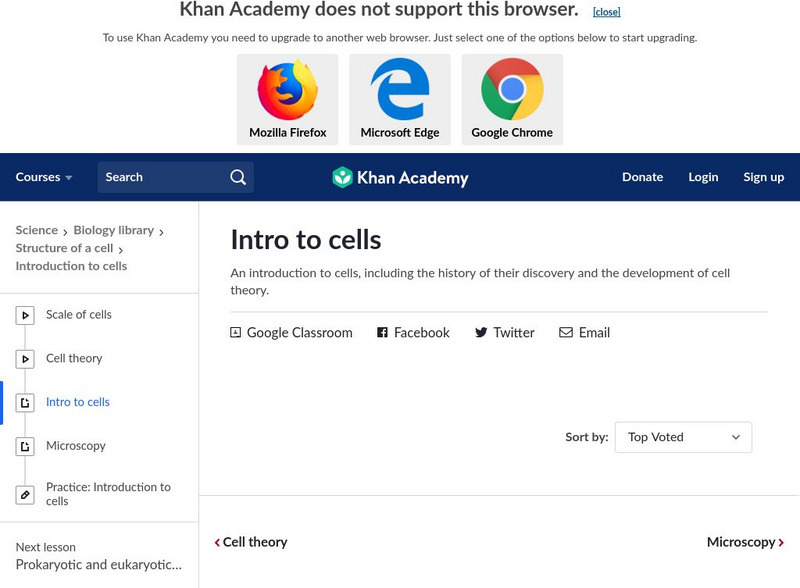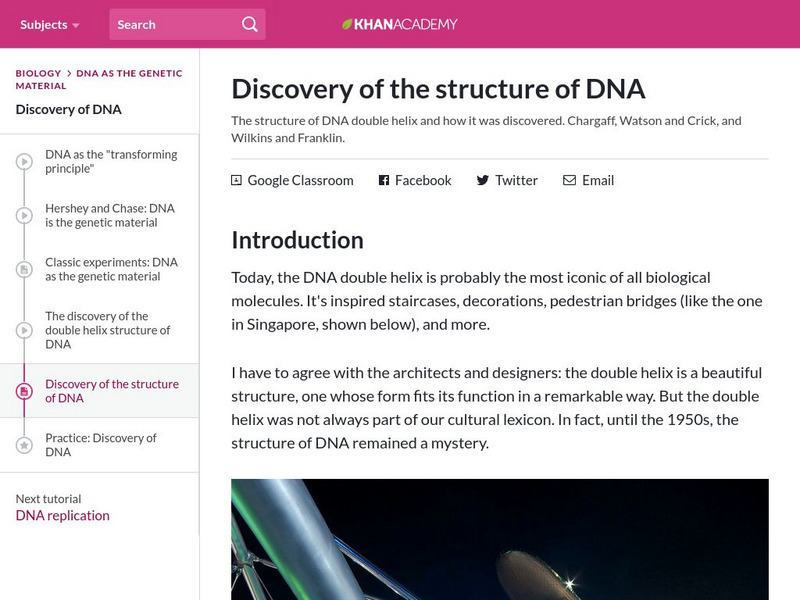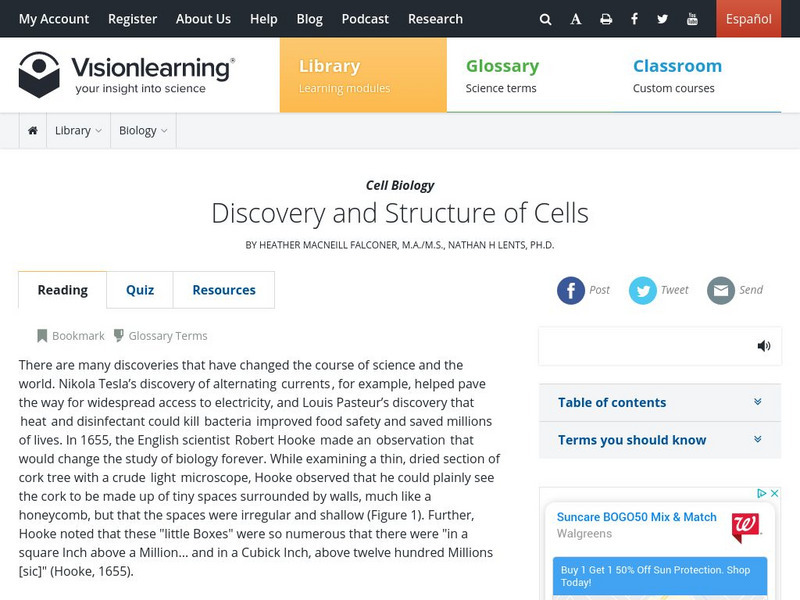Curated OER
Summer: Getting the Bugs Out
Students compare and contrast classification systems used throughout the world. They also examine the importance of preserving biological diversity.
Curated OER
Socioeconomic Implications of Fetal Transplantation An Exercise in Bioethics
Students explore ethical problems. In groups, students examine and study a given ethical problem. They practice techniques for making ethical decisions and interact with each other in the resolution. Students support their decision...
Curated OER
Inquiry-based Investigations into Pond Water Microorganisms
Students become familiar with common microorganisms and experience exploring the microbial world.
Curated OER
Diffusion & Osmosis with Data Analysis
Students explore principles governing diffusion and osmosis. Students perform a dialysis tubing experiment. They obtain core samples of potato in varying concentrations of sugar-water to measure water potential of the potato cells....
Curated OER
Evolution
Students research the theory of evolution and the controversy. In this evolution lesson students view a film on Charles Darwin then they write an essay about whether or not intelligent design should be taught in science class.
Curated OER
Discovering New Species
Learners identify animals observed by Lewis and Clark while evaluating the animal's habitat and describing the animal's behavior. Students construct a food web mobile to illustrate the animal's position in the food web in the 19th...
Curated OER
Weathering Landforms
Fifth graders brainstorm a list of ways the Earth's surface can change. As a class, they are introduced to the concepts of erosion and weathering and discover how wind and water cause changes to the surface of the Earth. To end the...
Curated OER
Become an Expert
Students practice their researching techniques by preparing a presentation with little notice. In this information research lesson, students utilize the Internet to research one of several subtopics concerning panthers....
Curated OER
Case Study: Should the Results of the Human Genome Project be Sold for Profit?
Students investigate a case study and discuss whether scientists working on the Human Genome Project should be allowed to patent their work. They consider ethical and legal issues, and determine who owns genetic information.
Curated OER
Goobers. Goobers? Goobers!
Students begin the lesson by noting the many ways in which to use peanuts. In groups, they use the internet to research the work of George Washington Carver. They discover the allergies and nutritional information of the peanut and...
Curated OER
Life is Weird!
Students describe major features of cold seep communities, and list at least five organisms typical of these communities. They infer probable trophic relationships among organisms typical of cold-seep communities and the surrounding...
Curated OER
Extraction of DNA from Onion
Students experiment with DNA by isolating it from plant tissue. They investigate whole onions to prepare DNA. They complete the experiment to examine the structural characteristics of DNA.
Curated OER
Where Should We Place Archaeopteryx?
Students classify Archaeopteryx using pictures of actual fossils and scientist representations of how the animal might have looked. They compare Archaeopteryx's characteristics to those of the five extant vertebrate groups to...
Curated OER
Fossils-Where Should We Place Archaeopteryx?
Students explore an interactive computer activity that provides the opportunity to look at features of various groups of animals and determine where an extinct organism might be classified.
Curated OER
Seashore Life
In this seashore life worksheet, students identify the animals that live on the seashore. Students then color the animals that live on the seashore. Students also draw and color any additional animals they would see.
Curated OER
Merging Art and Science?
Students approach science through artwork. In this art and science lesson students work together to develop theories and gather data.
Curated OER
Science: Put Your Heart into Engineering
Young scholars examine the heart and vascular system and the need for artificial valves. After explaining how heart valves function, they design their own heart valves for experimentation. They predict the speed of fluid flowing...
Curated OER
Extraction of DNA from Onion
Young scholars study DNA by isolating it from plant tissue. They determine the purpose of each step in the isolation procedure as it relates to the physical and biochemical characteristics of the genetic material
Khan Academy
Khan Academy: Biology: Structure of a Cell: Introduction to Cells
Learn about cell theory in this article. [12:29]
PBS
Pbs Learning Media: Cave Formation: Biogeochemical Cycles
This video segment adapted from NOVA chronicles the discoveries that led to a radical new theory in which living organisms, not just geological processes, play an active role in cave formation. [5:42]
Khan Academy
Khan Academy: Discovery of the Structure of Dna
Explore the structure of DNA double helix and how it was discovered. Learn about the work of Chargaff, Watson and Crick, Wilkins, and Franklin.
Other
Royal Society of Biology
Dedicated to those who are committed to the study of the biological science field, the Society of Biology presents current research and news about a variety of topics involving the life sciences.
Vision Learning
Vision Learning: Cells: Discovery and Basic Structure
This module focuses on cell structure and how the organelles function together to form the smallest unit of life. The cell theory is also discussed along with the basics features of the cell. Site also includes an interactive practice...
Sophia Learning
Sophia: Discovery of Cells: Lesson 3
This lesson explains how cells were first discovered, and introduces scientists that were a vital part of this discovery. It is 3 of 4 in the series titled "Discovery of Cells."























